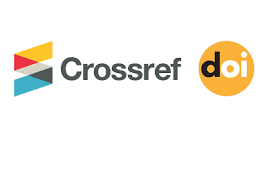Hydrocarbon Potentiality and Depositional Environment of Naokelekan Formation in Binari Serwan-1 Well, NE-Iraq Using Infrared Factors and Palynological Analysis Evidence
DOI:
https://doi.org/10.25130/tjps.v25i2.236الكلمات المفتاحية:
Naokelekan, Palynology, Infrared spectrometry, kerogen, amorphous organic matterالملخص
The cuttings from the Jurassic Naokelekan Formation have been studied in the oil exploratory Binari-Serwan-1 Well in Dokan Town, Iraqi Kurdistan Region, NE Iraq. Both infrared spectrometry techniques and microscopic study were used for determining hydrocarbon generation potentiality. The prepared strewn slides have been studied under polarizing microscope. The Naokelekan Formation has revealed an excellent total organic carbon (TOC) wt. % content, ranging from 4.20 to 5.88 wt. %. The palynomorphs as well as phytoclasts are totally absent and only the amorphous organic matter (AOM) was identified. The concentrated kerogens of selected samples were analyzed by the Infrared Spectrometer. The results of these samples analysis show existence of kerogen types II and III, which coincides with the microscopic study. This organic matter is of gas and oil prone types. This study suggests that the sediments were deposited in a marine, suboxic to anoxic environment.
التنزيلات
منشور
كيفية الاقتباس
الرخصة
الحقوق الفكرية (c) 2022 Tikrit Journal of Pure Science

هذا العمل مرخص بموجب Creative Commons Attribution 4.0 International License.
Tikrit Journal of Pure Science is licensed under the Creative Commons Attribution 4.0 International License, which allows users to copy, create extracts, abstracts, and new works from the article, alter and revise the article, and make commercial use of the article (including reuse and/or resale of the article by commercial entities), provided the user gives appropriate credit (with a link to the formal publication through the relevant DOI), provides a link to the license, indicates if changes were made, and the licensor is not represented as endorsing the use made of the work. The authors hold the copyright for their published work on the Tikrit J. Pure Sci. website, while Tikrit J. Pure Sci. is responsible for appreciate citation of their work, which is released under CC-BY-4.0, enabling the unrestricted use, distribution, and reproduction of an article in any medium, provided that the original work is properly cited.













